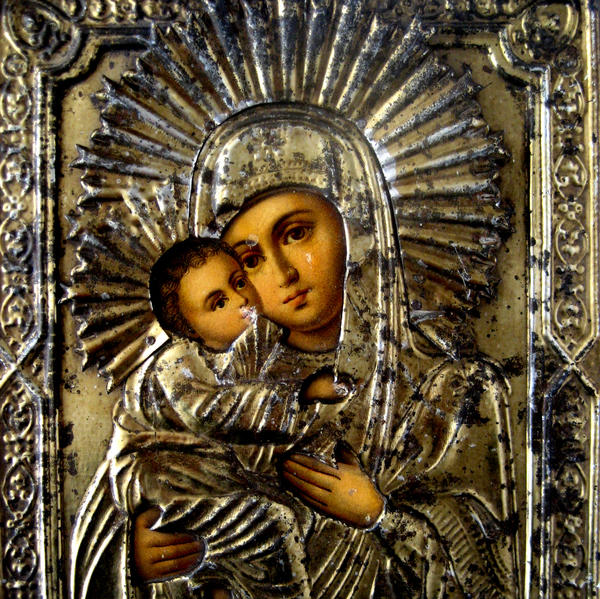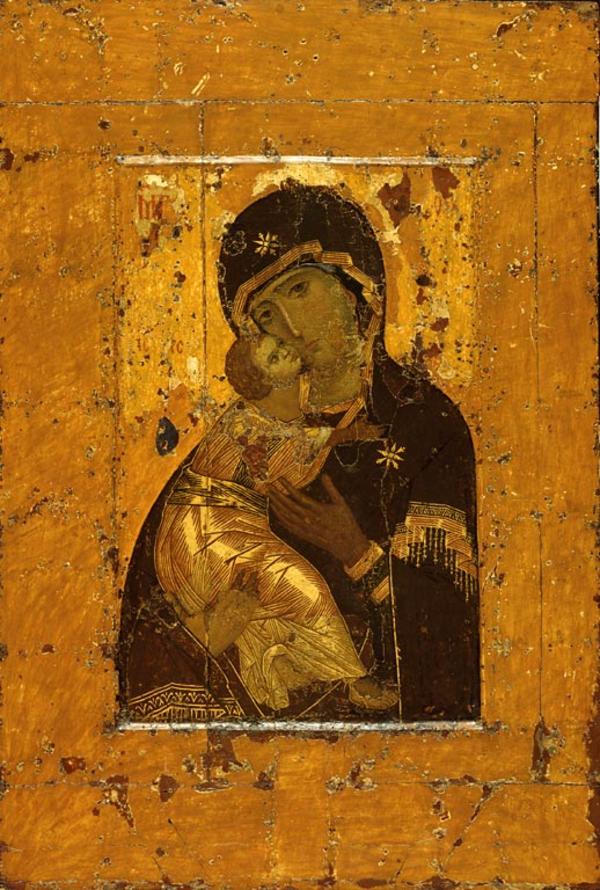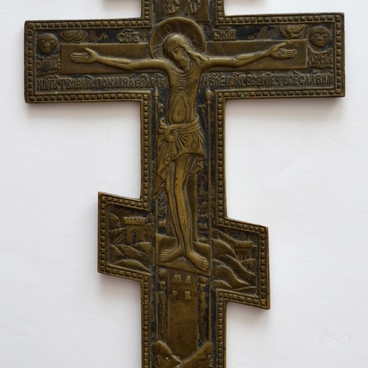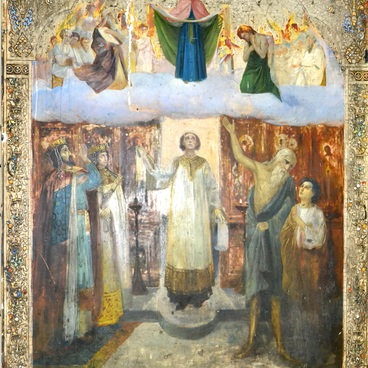The Theotokos [h1] created by an unknown author at the turn of the 19th and 20th centuries is an iconographic version of the ancient Vladimir Mother of God. A copy, the so-called list, is made on paper and glued to a wooden board. Metal mounting helps to protect the icon from the sun rays and moisture. Mountings – or icon platings – were usually made of brass alloy by forged method, so they were rather inexpensive. Such icons were popular among the peasant population.
The image and metal mounting are covered with yellow lacquer. On the plating, there are aureoles mounted in the form of diverging rays around the head of the Virgin Mary and the Child.
The image and metal mounting are covered with yellow lacquer. On the plating, there are aureoles mounted in the form of diverging rays around the head of the Virgin Mary and the Child.



